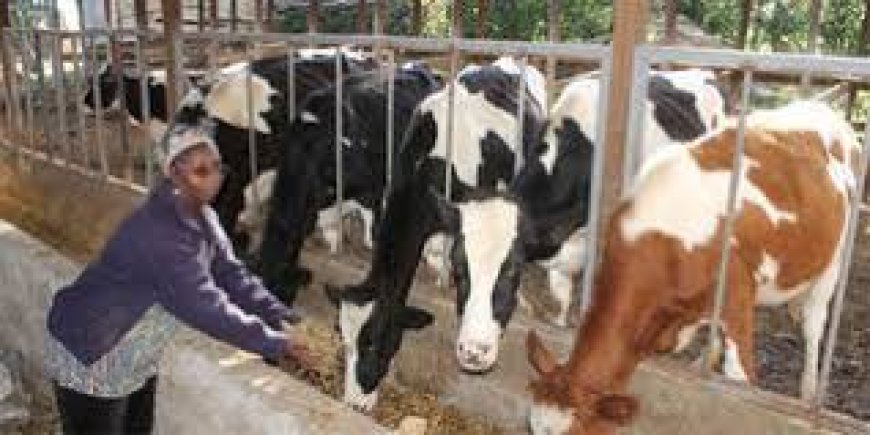2000 dairy farmers to benefit from feeds conservation training

Nakuru,
Friday September 22, 2023
KNA by Esther Mwangi
More than 2000 dairy farmers from Nakuru County are set to benefit from climate-smart technologies of producing animal feeds in an affordable and efficient method that will help reduce the overall cost of dairy production in the county.
According to New KCC Regional Sales Manager Samuel Ngotho, the training campaign which was rolled out by State-owned New KCC in collaboration with Nakuru County, aims at training farmers on silage production and forage preservation to ensure production of quality and adequate feeds throughout the year.
Mr. Ngotho explained that the company intended to use dairy training courses to demonstrate to farmers how to reduce operational costs on the farm for maximum returns in addition to combating the effects of climate change.
Ngotho who was speaking during a meeting with stakeholders at the County headquarters, said feeds were critical in ensuring high dairy productivity noting that dairy farmers grapple with low quality and high cost of feeds due to lack of relevant information on feeds conservation.
The Regional Sales Manager regretted that majority of livestock farmers in Kenya were pasture-based and the seasonality of growth of pastures adversely affected continuity of available feeds for livestock.
“Our farmers usually face difficulty in maintaining the pastures during the dry season and this silage can be used as a supplementary feed for livestock during these times,” he added.
The manager further said that KCC as a processor was banking on provision of extension services in all collection locations across the region to improve milk production adding that the company was committed to supporting farmers get nutrition, feeding and feed production training to improve on their milk production.
At the same time, Mr. Ngotho asked dairy farmers to invest in animal breeds that not only produce more milk but also consume little feeds to beat dry weather.
Rising costs of commercial feeds, Mr Ngotho observed, drove the cost of production up with feed prices continuing to rise even after the government waived the duty on imported raw materials.
Kenya’s dairy sector is estimated at 14 percent of the country’s agricultural gross domestic product (GDP), with Milk primarily being produced by smallholder farmers who account for 56 percent of total output.
It is estimated that the sector has 1.8 million smallholder farmers (about 80 percent of producers). The remaining 44 percent of milk output comes from commercial farmers.
The manager said that there were more than five million dairy cattle in the country producing an estimated four billion litres of milk annually, with the production projected to grow by about 150 percent by 2050.
While stating that Kenya has the highest per capita milk consumption in sub-Saharan Africa at 110 litres, Nakuru Deputy Governor David Kones said the demand, currently at eight billion litres, was also expected to grow with the population increase.
Mr Kones stated that fodder in the dairy farming sector had been a major cost driver, with farmers spending significant amounts of money on purchasing animal feeds.
He affirmed that Governor Susan Kihika’s administration was targeting to unlock the Sh. 25 billion potential in the dairy sub sector within the devolved unit by addressing a number of challenges that have affected quality and quantity of milk produced.
He said the County was working with various development partners and research institutions to tackle challenges holding back the dairy sub sector such as limited availability of quality and affordable feeds, inadequate infrastructure, including access roads and milk cooling facilities, limited extension services, low value addition to absorb surpluses and limited access to markets and market information.
Mr Kones said the devolved unit was working on new strategies to be adopted by farmers to increase milk production per animal to at least 15 litres which will translate to Sh 25 billion earnings annually.
“To address the milk marketing difficulties, the county is engaging the majority of the producers, who are currently practicing open grazing to move away from subsistence to commercial production with an aim of at least reaching the global daily average,” said Kones.
According to records from the County’s Agriculture, Livestock and Fisheries department, the region has 310,000 dairy animals that yield an average of 5 litres per animal.
However, this production is far below the global average of 24.5 litres per cow per day.
Courtesy; KNA
What's Your Reaction?



































































































































































































































































































